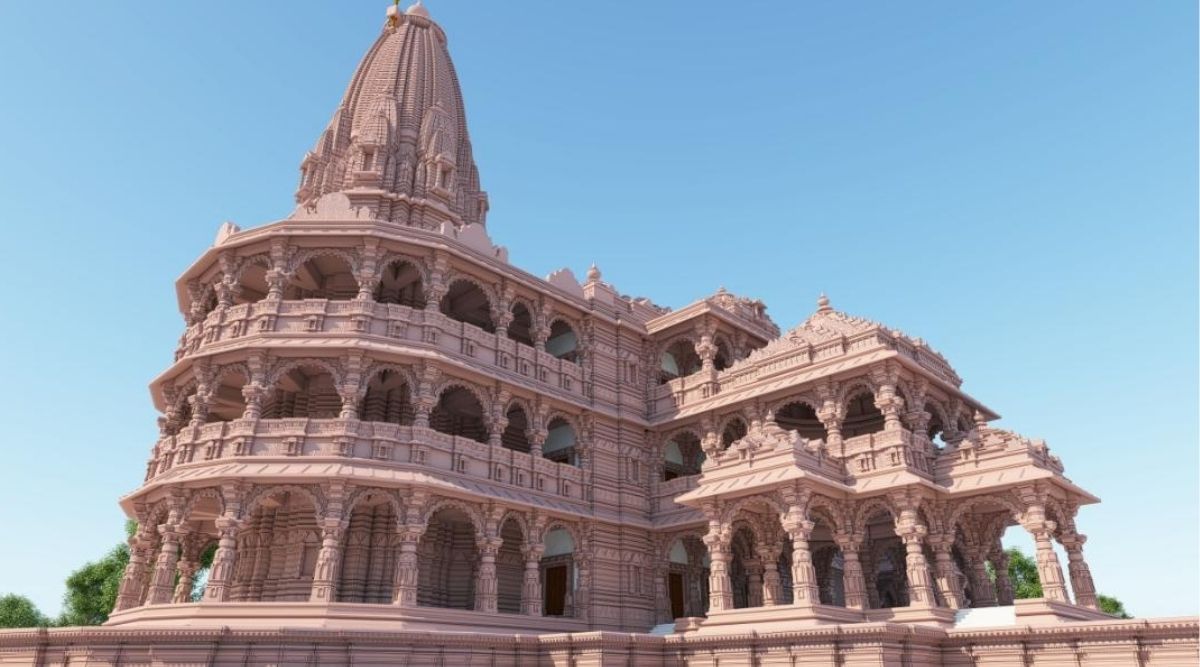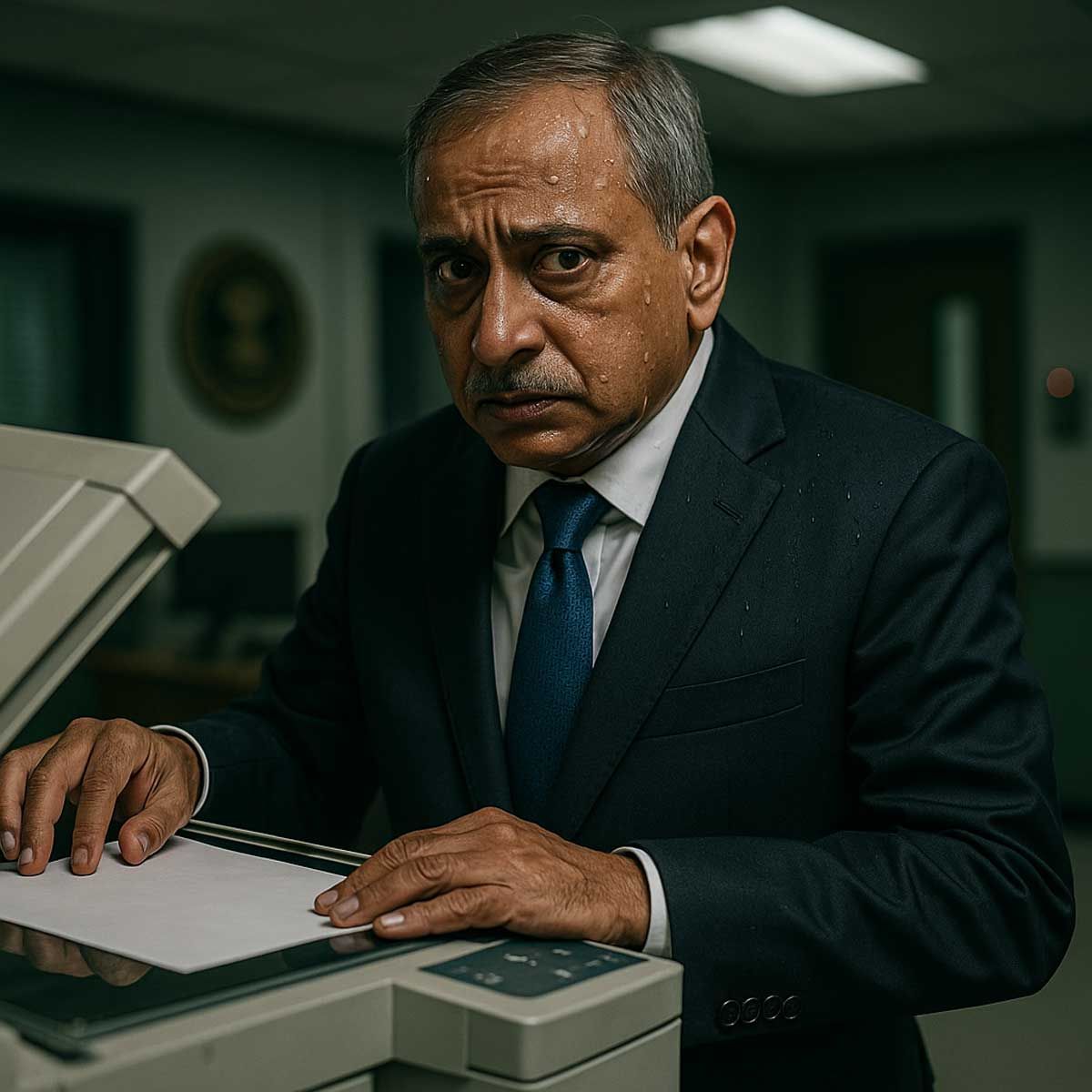More Coverage
Twitter Coverage
Satyaagrah
Written on
Satyaagrah
Written on
Satyaagrah
Written on
Satyaagrah
Written on
Satyaagrah
Written on
JOIN SATYAAGRAH SOCIAL MEDIA
Here is the truth about the land deal by Ram Janmabhoomi Teerth Kshetra and how the allegations by likes of AAP are baseless

In March 2021, Shri Ram Janmabhoomi Teerth Kshetra through its General Secretary Champat Rai executed an Agreement to buy an additional piece of land for the purposes of additional construction to facilitate pilgrims who would be travelling to the Ram Temple.
While the Supreme Court had given the ‘disputed land’ to the trust, land surrounding the Ram Janmabhoomi is owned by various individuals and entities and thus, has to be acquired privately by Temple trust to build facilities that would help the devotees which are expected to visit the temple once it opens. Champat Rai has been on record stating that the land surrounding the temple land was being acquired for several reasons, including Vaastu considerations, building facilities for pilgrims etc.
In this specific case, the 1.208 Ha land was decided to be purchased by the Trust at Rs 18.5 Cr. from one Sultan Ansari and one Ravi Mohan Tiwari. Ansari and the others had in turn bought the same land at just Rs 2 crore from one Kusum Pathak. This particular land in question has been embarked on for acquisition by the Shri Ram Janmabhoomi Teerth Kshetra near the Ayodhya railway station to build a facility for the pilgrims who would be visiting the temple after it is constructed.
A controversy erupted after Aam Aadmi Party had used the sale deed of the earlier transaction between Ansari and Kusum and the Agreement to Sell between Ansari and the Trust to allege a “scam” in the procurement of this land by the temple trust. Aam Aadmi Party’s leader Sanjay Singh alleged that Shri Ram Janmabhoomi Teerth Kshetra through its General Secretary Champat Rai bought a piece of land at an exponentially higher price. Samajwadi Party’s Pawan Pandey made similar allegations.
He alleged that the land value was estimated at Rs.2 crore during the registry, but the Trust made an additional payment of Rs.18.5 crore to the seller just five minutes later. While the transactions were made in the name of Champat Rai, General Secretary, trust member Anil Mishra and Rishikesh Upadhyay, Mayor, Ayodhya were witnesses to the registry. He demanded an inquiry by the Central Bureau of Investigation (CBI) and Enforcement Department (ED) in the matter.
However, when one looks at all the documents and the facts surrounding the case, it quickly becomes clear that a ‘scam’, as alleged by AAP, does not quite exist. Following are the claims made by AAP, the doubts that arose since then and the explanation based on facts of the case and documents acquired by OpIndia.
Claim: Ansari and others bought the land from Kusum on 18 March 2021 and sold it to the Ram Mandir Trust just after 15 minutes. How can the price of the land rise exponentially in just 15 minutes?
Truth: The crux of these allegations stem from the fact that both the documents put up by AAP, the sale deed of the land from Kusum to Ansari and the Agreement to Sell between Ansari to the temple trust were executed on the same day. According to AAP, since both the documents were executed on the same day, in a span of 15 minutes, the entire transaction happened on the same day itself, therefore, the price increase from Rs 2 crores to Rs 18.5 crores points towards a scam.
However, things are not always that simple.
While both the documents were registered on the same day, that doesn’t mean both the sales were conceptualised and also happened on the same day.
In this specific case, the first agreement to sell the land, by Kusum Pathak to Ansari and others had taken place in 2019. On 17.09.2019, Kusum had agreed to sell her land to Ansari at the then-prevailing market rate (Rs 2 crores) and had received a Rs 50 lac advance from Ansari for the same. The Agreement was duly registered.
As per the registered agreement, Ansari was allowed 3 year time period to pay the rest of the amount (Rs 1.5 crores) to Kusum for the purchase of the land. The Rs 1.5 crore meant to be paid by September 2022. Since an advance was paid and the agreement was registered, Kusum could not back out of the deal simply because the land prices rose after the 9th November 2019 after the Ayodhya verdict by the Supreme Court. Therefore, she was obligated to sell her land to Ansari at Rs 2 crores itself.
Subsequently, when the Trust decided to buy the property in 2021, it requested Ansari to execute a Sale Deed with Kusum to give effect to the 2019 Agreement to Sell. Consequently, Ansari and Kusum executed a registered sale deed on 18.03.2021 giving effect to the 2019 Agreement to Sell.
 |
Simultaneously, Ansari executed the Agreement to Sell with the Temple Trust on the same day. The Agreement to Sell was also registered. This ensured that the Temple secured the land immediately after its title passed on to Ansari.
 |
Claim: What is the difference between Agreement to Sell and Sale Deed? Differentiating between the two is an attempt to whitewash the ‘scam’
Truth: Various documents are being used indiscriminately to create confusion about this transaction. Journalist Narendra Nath Mishra took to Twitter to claim that the Mayor of Ayodhya had ‘admitted’ to the ‘allegation’ that the same land was registered twice on the same day. This claim was made as some sort of vindication of the allegations of scam.
|
There is a vast difference between the two. The “agreement to sell” contract is one where the property transfer is promised on a future date and a “sale deed” is one that entails an immediate transfer of the property rights. Thus, depending upon the nature of the deal between the buyer and the seller, the covenant is drafted. The rights in the property do not pass conclusively till there is a Sale Deed.
It is pertinent to mention here that Kusum and Ansari had drawn up, executed and registered an “Agreement to Sell” in 2019, not a “Sale Deed”. As mentioned, Kusum had received an advance of Rs 50 lacs for the land and the rest of the Rs 1.5 crores was set to be paid to her by Ansari over a span of 3 years. These details were mentioned in the Agreement to Sell. At that time, Kusum and Ansari executed an “Agreement to Sell”, which essentially means in this case that an agreement was drawn up about the price of the land, the advance given, the remaining amount to be paid and a deadline, by which the payment was to be clear. The title transfer of the land had not happened, and for that, a “sale deed’ would need to be executed (which had not happened after 2019).
Therefore, in 2021, when the temple trust was buying the land from Ansari, the temple trust insisted that a “Sale Deed” is drawn up and registered, where the title itself was transferred from Kusum to Ansari, so the title is not disputed later. This ‘Agreement to Sell’ was consummated when a Sale Deed was executed between the two on 18.03.2021. Ansari’s title in the land was perfected on this date though the transaction was conceptualised and framed prior to Ayodhya Verdict in 2019 in terms of the Agreement to Sell. The price was at the value given in the 2019 Agreement to Sell.
Pertinently, once this title was perfected, the Temple Trust executed an Agreement to Sell with Ansari whereby Ansari agreed to sell the property to the Trust for Rs. 18.5 Cr which is the current prevailing rate of the property. There is NO sale deed yet between Ansari and Temple Trust.
As for the second claim of Mishra, where he says that the Mayor says that the agreement was drawn up 10 years ago but the parties (Kusum and Ansari) had forgotten to “register” the agreement, it is speculated that Ansari’s grandfather (Jaan Mohammad) had a stake in the land since 2011 and even Ansari’s father Irfan Ansari had stake since 2017 at least, however, the details of the same could not be verified.
Claim: The price of the land was Rs 2 crores in 2019, therefore, a purchase of the same land in 2021 at Rs 18 cr points towards a scam since the price of land can’t jump so much in two years
Truth: On November 9th, 2019 the Supreme Court put an end to a 5-century dispute, giving the 67 acres of Ram Janmabhoomi land in Ayodhya to Hindus. A trust was then formed to oversee the construction of the temple and the acquisition of more land to construct allied facilities. The premise of the allegations of “scam” is that the price of the land could not have gone up exponentially in just two years.
However, this claim is also not true.
It is an established fact that the land prices surrounding Ram Janmabhoomi and even in the rest of Ayodhya increased exponentially after the Supreme Court verdict. In December 2019 itself, Forbes had published an article detailing the realty price rise in Ayodhya. In the article, Forbes quotes a property dealer saying that “The rates have increased up to six folds after the Supreme Court passed its verdict”. He claims that after the illegal structure was demolished, many Hindu and Muslim families had sold their property and moved out of Ayodhya, however, now the price of properties have increased exponentially.
In 2019 itself, the property dealer had said, “In a 4-km radius from the proposed Ram temple site, rates have tripled, from Rs 400 per square foot to Rs 1,200 per square foot”. If within a month of the verdict the property rates increased that much, 2 years on when the construction of the temple is well on its way, one can safely conclude that an increase in land price from Rs 2 crores to Rs 18.5 crores is not unfathomable.
It may also be noted that even the land acquisition by the government provides for sale at 4 times the circle rate. Now the circle rate for the property in question is Rs. 5.79 Cr as per the said documents shown by Aam Aadmi Party. The prevailing market rate, thus, would be around Rs. 23 Cr. However, the Temple Trust got the property at 3 times the value which is lesser than even the prevailing market price.
Claim: Why was the trust in such a hurry? Why did they want Asnari and co to make such a huge profit?
Truth: What one has to realise in the case of the Ram Temple construction is that it is a long battle that has been fought for over 5 centuries. The land was embroiled in a legal dispute for years and now, when the Supreme Court finally gave its verdict and the trust got a clear title for the 67 acres of land, they understandable don’t want to get involved in yet another title dispute.
It is pertinent to mention that while the initial sale agreement was made on 17th September 2019, the sale between Ansari and the temple trust was taking place on 18th March 2021. In this span, it is pertinent to remember that even the earlier agreement was not consummated. While the father of Ansari too had a stake in the land, the temple trust wanted everything to be on paper and transparent so that no litigation is brought up after the sale was executed.
The temple trust was ‘in a hurry’ to get a clean title of the land (and therefore insisted that even for the 2019 agreement a sale deed was drawn up and executed). Later, the Trust would have found itself embroiled in another title suit for a small piece of land, which could have hampered the temple construction with the courts getting involved in the entire matter again had the trust not hurriedly executed the sale and registered the sale legally as well.
Claim: Trust could have bought the land directly from Kusum at a cheaper rate instead of buying from Ansari and the company
Truth: The temple trust could have bought the land directly from Kusum if the original sale agreement could have been rescinded. However, since Kusum was already given Rs 50 lacs as advance by Ansari, there was no way that Kusum could have not honoured her agreement, without being liable for huge compensation payable to Ansari and making the property a subject of a long drawn legal battle. She would have to compensate Ansari as per the current market rate which would have eroded her profits anyway. The temple trust could not have bought the land from Kusum directly since Kusum was legally bound to sell the land to Ansari at Rs 2 crores (price agreed upon in 2019, before the Ayodhya verdict) and this would have involved a complicated and long-drawn legal battle.
If Trust had bought directly from Kusum, Ansari would have got a strong legal case against Kusum as well as the Trust. It is pertinent to note at this stage even Ansari had a stake in that piece of land (as is being speculated) and therefore, if the trust had purchased directly from Kusum, the land would have ended up in lengthy litigation.
In any case, Kusum could not have sold the land to the Temple Trust at Rs. 2 Cr anyway because the circle rate of the property is Rs. 5.79 Cr and any sale at a value less than that in 2021 would have been illegal being theft of stamp duty.
It is also amusing that the journalists and Aam Aadmi Party who talk of ethics and propriety wanted Kusum to break a valid and legitimate contractual arrangement to earn more unethical profit.
Essentially, there are the following points that need to be taken into consideration as far as this case is concerned.
- The original ‘Agreement to Sell’ was done between Kusum and Ansari in September 2019, for Rs 2 crores at the then-prevailing market rates. (There was no ‘sale deed’ and therefore, no title transfer in the name of Ansari).
- At that time, there was no sale deed drawn up and therefore, the title was not clear with Ansari.
- By 2021, the price of the land increased exponentially due to the Ayodhya verdict and Bhumi Poojan of Ram Mandir.
- The temple trust then decided to acquire that land from Ansari in 2021 for a value even lesser than the market rate in 2021 – Rs 18.5 crores.
- When the decision to acquire the land was made, the temple trust insisted that there was a sale deed for the previous 2019 deal as well, so the title of the land was clearly with Ansari before they purchased the land from him.
- It is because of this and the temple trust’s need to be transparent, that both transactions, 2019 one between Kusum and Ansari and 2021 one between Ansari and Temple Trust, were executed and registered on the same day in a short span of time.
- All the documents are available on UP Government Website online which can be verified.
- The temple trust could not have purchased the land directly from Kusum at a cheaper rate because Kusum had, in 2019, got Rs 50 lacs as advance and was therefore obligated to sell her land to Ansari for Rs 2 crores. Any other deviation would have resulted in a legal misadventure and another legal dispute for 5 centuries.
- The rise in price is explained by the SC Ayodhya judgement where realty prices shot up in Ayodhya, as evidenced by the Forbes report.
- The additional land is being acquired by the temple trust, over and beyond the 67 acres, because the temple trust wants to build allied facilities for the pilgrims and also wants to ensure that there is space to build the Ram Temple in accordance with Vastu norms.
It is, therefore, evident that no “scam”, as alleged by AAP and SP truly exists. The malicious intent to rake up a controversy where none exists clearly points to the fact that several political parties in India are merely trying to create roadblocks in the construction of the Ram Mandir, that Hindus have waited for over 5 centuries.
 Support Us
Support Us
Satyagraha was born from the heart of our land, with an undying aim to unveil the true essence of Bharat. It seeks to illuminate the hidden tales of our valiant freedom fighters and the rich chronicles that haven't yet sung their complete melody in the mainstream.
While platforms like NDTV and 'The Wire' effortlessly garner funds under the banner of safeguarding democracy, we at Satyagraha walk a different path. Our strength and resonance come from you. In this journey to weave a stronger Bharat, every little contribution amplifies our voice. Let's come together, contribute as you can, and champion the true spirit of our nation.
 |  |  |
| ICICI Bank of Satyaagrah | Razorpay Bank of Satyaagrah | PayPal Bank of Satyaagrah - For International Payments |
If all above doesn't work, then try the LINK below:
Please share the article on other platforms
DISCLAIMER: The author is solely responsible for the views expressed in this article. The author carries the responsibility for citing and/or licensing of images utilized within the text. The website also frequently uses non-commercial images for representational purposes only in line with the article. We are not responsible for the authenticity of such images. If some images have a copyright issue, we request the person/entity to contact us at This email address is being protected from spambots. You need JavaScript enabled to view it. and we will take the necessary actions to resolve the issue.
Related Articles
- Indian govt won’t be any different from British if Hindus can’t manage their own temples
- Three booked for falsely accusing general secretary of the Ram Temple Trust in a Facebook post in ‘land scam’
- Srikalahasti Temple, Dakshina Kailash
- Culture And Heritage - Meenakshi Temple Madurai
- Jagannath Temple administration issues clarification on proposed sale of temple lands
- Biggest Wonder of the World : Kitchen of Lord Shri Jagannath
- Narasimha Rao govt brought places of Worship Act as a hurdle in reclaiming ancient Hindu heritage destroyed by Muslim invaders
- 5 lakh kg of temple jewellery has been melted so far, DMK government planning to melt even more
- Communist rockstar KK Shailaja displays ugly Hinduphobia in Kerala assembly
- Soft-conditioning of Hindu minds to normalize grooming jihad in Bengali TV serial ‘Khorkuto’
- Anti-Hindu Delhi Riots case: Delhi HC grants bail to accused Asif Iqbal Tanha, Devangana Kalita, Natasha Narwal
- The ‘Sanghi propaganda’ trope on abduction and conversion of Sikh girls to Islam. Here is how this online tirade is an omen of impending danger
- An Artisan Heritage Crafts Village: Indigenous Sustainability of Raghurajpur
- Congress leader spreads vaccine hesitancy again, this time claims newborn calves are slaughtered for their serum. Here is the truth
- Supreme Court dismisses plea seeking protection of Hindus from the Muslim community in Mewat





























